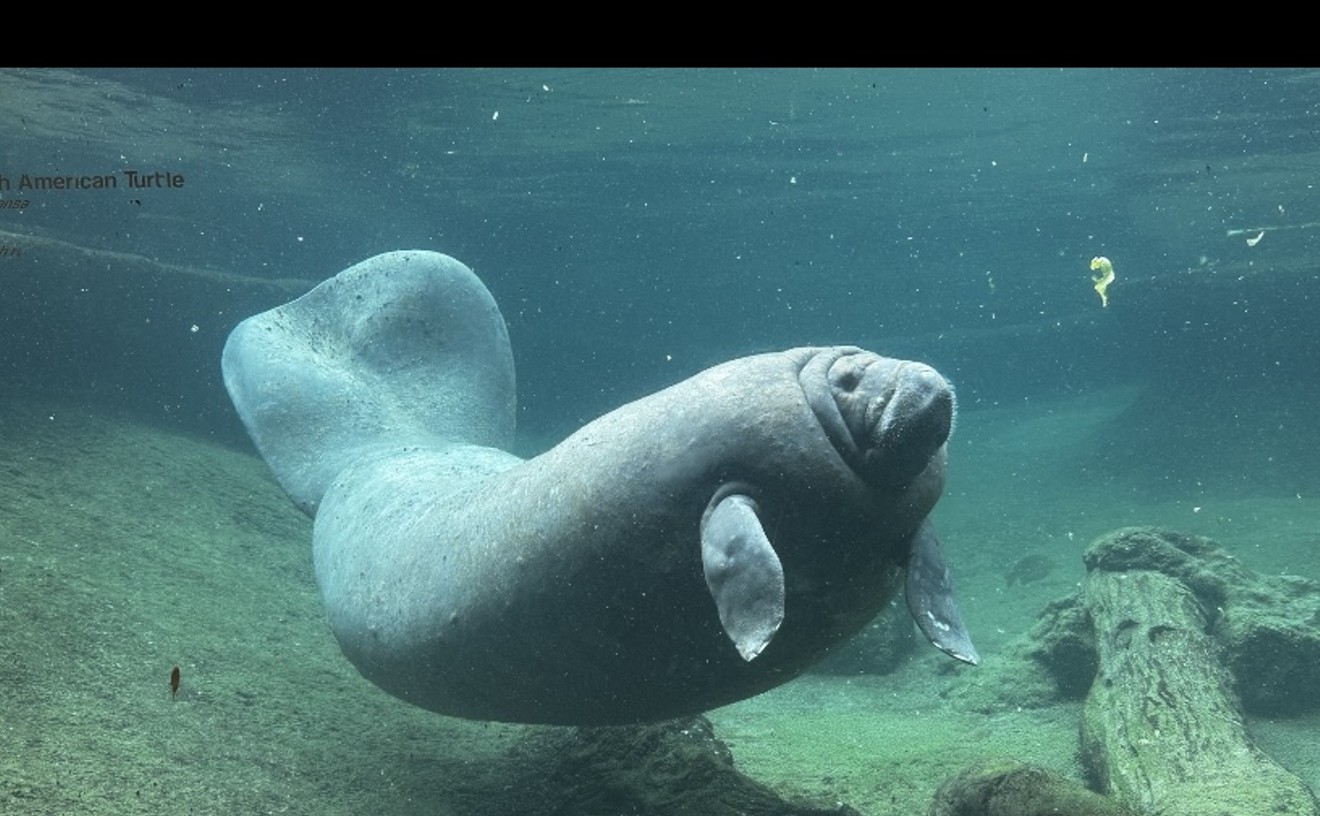When workers departed on the tugboats that brought them, they left a gravelly moonscape with a patch of red mangroves huddled at the southern end and a few forlorn-looking, politically correct "native" plants and bushes standing here and there. From a decades-old growth of towering Australian pines, only about 100 trees remained in a thin ribbon along the sandy western shore.
"We really got shammed," says Tim Breuil, a merchant and Boy Scout troop leader from North Miami. Breuil, with a half-dozen fellow powerboaters, raised a squawk six months ago as state and county planners prepared to spend $482,000 "restoring and enhancing" the northernmost of Biscayne Bay's fifteen spoil islands, known alternatively as Sandspur Island or Beer Can Island. On July 2, the group met with officials on the shady sandbar and hammered out a compromise: instead of removing all the Australian pines, workers would leave most of the trees in a 90-foot-wide corridor on the west side of the island.
"Work in the 40-foot area adjacent to the water will be restricted to removing most undesirable exotic vegetation and Australian pines overhanging the water," wrote Brian Flynn, an erosion-control specialist for the Metro-Dade Department of Environmental Resources Management, in a July 6 letter to the group. "All Australian pines and all native vegetation will remain in this area. In the 50-foot corridor immediately landward of that area, no existing vegetation will be removed."
Breuil and other members of his group accuse Flynn of breaking his promise. Flynn counters that Hurricane Andrew wiped out much of the island foliage that was meant to remain.
"That buffer zone wasn't a continuously vegetated area anyway," says Flynn. "And during the storm there were a lot of trees that ended up going down, just as they did in other parts of the county. Those trees were pretty much exposed to the full force of 200-mile-per-hour winds."
Flynn and other county and state officials -- none of whom supervised the tree removal or inspected the island since -- say the private company they contracted to carry out their detailed instructions must have initially left the 90-foot buffer zone then removed the trees after they were knocked down by the hurricane.
Then again, they say it's possible the tree-removal firm simply screwed up. "I have not been out there," says Scott Robinson, manager of the Oleta River State Recreation Area, of which the state-owned island is a part. "I don't know why the promise would have been broken, and I assumed it was still intact." Carlos Merida, project manager for the land-clearing firm Phillips and Jordan, Inc., could not be reached for comment. Other company representatives did not return phone calls.
Breuil and other protest group members who have camped and partied on Beer Can Island for years claim they were tricked, but they can't prove it. "The only one telling the truth was [Robinson]," says Breuil. "He never committed to anything, and he said he'd like to see all the trees gone. The other two [Flynn and DERM's marine biologist Gary Milano] were a couple of politicians -- they just told us what we wanted to hear."
County officials say they will begin seeding Beer Can Island with native plants such as gumbo-limbo, Jamaican dogwood, and mahogany during the next 30 days. They hope that after a few years the island will once again be thickly wooded. The aggressive Australian pines are an ecological menace, they believe, because the trees' thick pine-needle carpet chokes out other species. Moreover, the shallow roots of Australian pines don't provide much erosion protection. Flynn says he remembers two small Biscayne Bay islands near Coconut Grove that no longer exist. The culprit: erosion. Like Beer Can Island, the vanished land masses were created in the Thirties as a mucky byproduct when the U.S. Army Corps of Engineers dredged the Intracoastal Waterway. And like Beer Can Island, they were overtaken by Australian pines.
Kirk Swing, who has thrown a yearly blowout at Beer Can Island off and on for three decades, says he probably will never return. "This was the most popular island out of all of them, a real landmark," he says. "They've ruined our landmark. We'll have to change the location of the next party, maybe to Pork Chop Island just north of the Miami Herald building. Away from all these government idiots."










